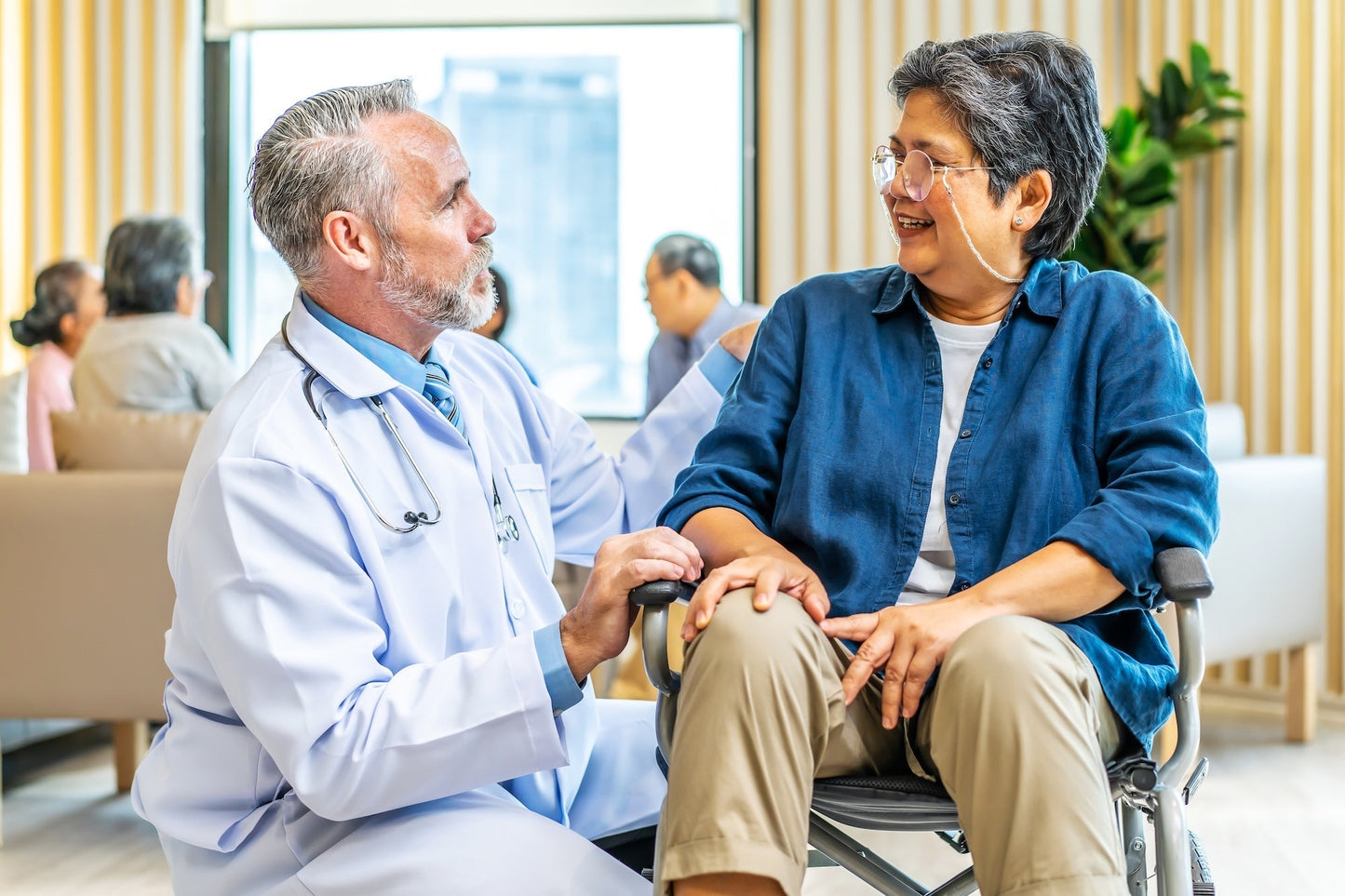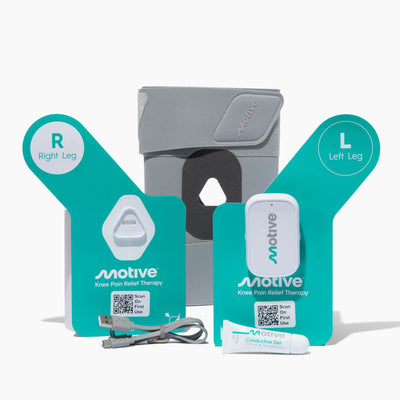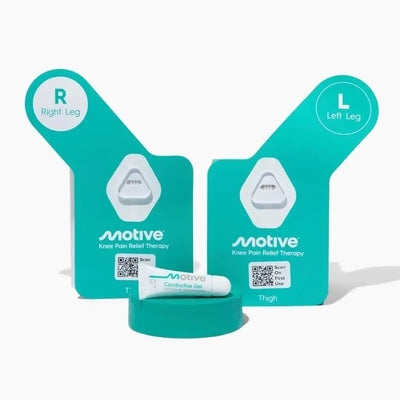
From creaky knees that worsen in cold weather to swollen fingers that make daily tasks challenging, arthritis manifests in surprisingly diverse ways. Understanding these differences isn’t just medical trivia but essential knowledge for the 54 million Americans living with some form of this common yet complex condition.
Joint pain affects nearly one in four adults in the United States, but many don’t realize that “arthritis” actually encompasses over 100 different conditions. Each type has its causes, symptoms, and treatments. This knowledge gap often leads to delayed diagnosis and mismanagement.
In this article, we’ll look at seven different types of arthritis, their characteristics, and how understanding your specific condition can be key to effective management. Plus, we’ll explore evidence-based approaches to relieve arthritis pain and maintain mobility, including new research in muscle strengthening that addresses one of the root causes of joint pain.
What are the 7 Types of Arthritis?
Each type of arthritis presents with unique symptoms, affects different populations, and requires different treatments.
Let’s look at the common types of arthritis that millions of people live with every day.
Osteoarthritis (OA)
Known as the “wear and tear” arthritis, osteoarthritis is the most common form of arthritis, affecting over 32.5 million adults in the United States. This condition develops gradually as the cartilage cushioning the ends of your bones wears down over time.
Knee osteoarthritis particularly affects those who’ve had previous injuries, are overweight, or have jobs that require repetitive knee stress. As the joint lining deteriorates, bones start to rub against each other, causing pain, stiffness, and reduced range of motion that worsens with activity and improves with rest.
Unlike some other types of arthritis, OA isn’t primarily driven by joint inflammation but rather by mechanical wear and progressive joint damage. However, inflammation can develop as the condition progresses. Risk factors include age, joint injuries, obesity, and family history.
The good news is that patients can use Motive’s knee pain relief therapy to ease symptoms and reduce pain.
Rheumatoid Arthritis (RA)
Unlike osteoarthritis, rheumatoid arthritis is an autoimmune disease in which the body’s immune system mistakenly attacks the lining of the joints, called the synovium. This immune system attack causes inflammation that thickens the synovium, eventually destroying cartilage and bone within the joint.
Rheumatic diseases affect joints symmetrically—if one hand is affected, the other usually is too. Beyond joint pain, people with rheumatoid arthritis often experience fatigue, low-grade fever, and general malaise. The condition can flare up periodically with periods of increased symptoms followed by periods of remission.
What makes RA tricky is that it’s a systemic condition that can affect other internal organs and healthy tissues, including the heart, lungs, and blood vessels. Early diagnosis and treatment are key, as joint damage can become permanent if left untreated.
Pro-tip: Discover how maintaining muscle strength with effective knee pain treatments can complement RA treatments.
Psoriatic Arthritis (PsA)
Psoriatic arthritis is an example of an interesting connection between musculoskeletal and skin diseases, and the impact on connective tissues, including joints. Up to 30% of people with psoriasis (a condition that causes red, scaly patches on the skin) will develop arthritis, which can affect any joint in the body.
Psoriatic arthritis symptoms include joint pain and muscle stiffness, swollen fingers and toes (sometimes referred to as “sausage digits”), nail changes (such as pitting and ridges), and the classic psoriasis skin lesions. Inflammation can also affect where tendons and ligaments attach to bone, causing pain in the heel or sole.
Unlike some other types of inflammatory arthritis, PsA can be asymmetric and often affects the distal joints (those closest to the nails) of the fingers and toes. Severity can range from mild to debilitating, with some people having persistent inflammation that can lead to joint damage if not treated.
Gout
One of the most painful forms of arthritis, gout, occurs when too much uric acid in the blood forms uric acid crystals in a joint. These small crystals form deposits that cause intense inflammation, swelling, redness, and pain.
Gout most commonly affects the big toe joint, but can also strike one or more joints, such as the knees, ankles, and wrists. An attack can start suddenly, sometimes waking people up from sleep with the feeling that their big toe is on fire. The affected joint becomes hot, swollen, and so tender that even the weight of a bed sheet can feel unbearable.
Risk factors for gout include a diet high in purines (found in red meat, organ meat, and some seafood), alcohol consumption, obesity, certain medications, and family history. Keeping uric acid levels in check through diet, medication, and lifestyle changes is key to preventing recurrent attacks.
Lupus (Systemic Lupus Erythematosus - SLE)
Joint pain is one of the most common symptoms of lupus. Lupus arthritis causes severe pain, stiffness, and swelling in multiple joints, especially the small joints of the hands, wrists, and knees.
Unlike rheumatoid arthritis, lupus arthritis rarely causes permanent joint deformity. Beyond joint symptoms, people with lupus often experience extreme fatigue, fever, skin rashes (especially the classic “butterfly rash” on the cheeks), sun sensitivity, and symptoms related to organ inflammation.
The condition can be mild to life-threatening and often follows a pattern of flares and remissions.
You can also find alternative solutions for managing arthritis pain naturally with Motive.
Ankylosing Spondylitis (AS)
Ankylosing spondylitis mainly affects the spine, causing inflammation between vertebrae, which can lead to severe, chronic pain and discomfort. In advanced cases, inflammation can cause new bone formation, resulting in parts of the spine fusing (ankylosis) and a rigid spine, potentially leading to a hunched-forward posture.
Early signs of ankylosing spondylitis include pain and stiffness in the lower back and hips, especially in the morning or after periods of inactivity. The pain usually improves with exercise. AS can also cause inflammation in other parts of the body, including the eyes, heart, lungs, and other joints.
This condition usually starts in early adulthood and affects men more than women. There is a strong genetic component; most people with AS carry the HLA-B27 gene.
Regular exercise and good posture are key to managing this condition. A good way to get ahead is to learn about more comprehensive approaches to managing spine-related pain with devices like Motive.
Juvenile Idiopathic Arthritis (JIA)
Juvenile idiopathic arthritis is the most common form of arthritis in children under 16. The term encompasses several different subtypes, all involving chronic joint inflammation. The “idiopathic” part of the name means the cause is unknown.
JIA symptoms include joint pain, swelling, stiffness, and sometimes fever, rash, and eye inflammation. Children may show signs like limping, reduced activity, reluctance to use an arm or leg, or irritability. Some children may have only a few joints affected (oligoarticular JIA) while others may have many joints involved (polyarticular JIA).
Early diagnosis and aggressive treatment are key to preventing joint damage and preserving joint function as the child grows. With proper care, many children with JIA can lead active, full lives, and some may even go into remission as they enter adulthood.
Managing Arthritis Pain and Maintaining Mobility
While each type of arthritis requires specific medical treatment, there are some universal ways to manage arthritis pain and improve quality of life. Pain management usually involves a combination of medication, physical therapy, exercise, and lifestyle changes like integrating Motive into your routine.
Many people don’t realize that muscle weakness is a major contributor to joint pain. Weak muscles don’t provide adequate support to the affected joints, putting more stress on already damaged structures. In fact, people with knee osteoarthritis often have quadriceps weakness, which can worsen joint pain and accelerate disease progression.
Physical therapy has been recommended for arthritis for years, but traditional strengthening exercises can be extremely painful for those with severe arthritis. This has created a need for new approaches to strengthen muscles without stressing damaged joints.
Motive offers an FDA-cleared therapy that targets one of the leading causes of knee pain—muscle weakness—by strengthening the muscles around the joint. This approach allows for muscle strengthening without adding stress to the painful joints—a significant advantage for those with moderate to severe arthritis pain.
Living Well with Arthritis
Regardless of what type of arthritis you have, working with your healthcare providers to develop a treatment plan is key.
Early diagnosis and treatment can prevent joint damage and preserve function.
Beyond medical treatments, many lifestyle factors can help manage arthritis symptoms:
-
Being at a healthy weight reduces stress on weight-bearing joints like knees and hips
-
Regular, appropriate exercise maintains flexibility and builds muscle around joints
-
Anti-inflammatory diets can reduce generalized pain and inflammation
-
Stress management can reduce flare-ups in certain types of arthritis
-
Assistive devices can help protect joints during daily activities
Support groups and patient education programs can also be helpful, providing practical tips and emotional support.
Living with chronic pain can take a toll on mental health, and addressing these aspects is part of comprehensive arthritis care.
Empower Your Joint Health with Motive
Knowing what type of arthritis you or your loved one has is the first step to managing it. While you might want to prevent arthritis, most types of arthritis can’t be cured. However, advances in treatments and therapies are improving outcomes and quality of life for those affected.
Strengthening the muscles around affected joints is one of the most promising ways to reduce joint and muscle pain and improve function.
Motive’s FDA-cleared therapy is a unique solution that strengthens these critical muscles without adding stress to painful joints.
Unlike arthritis treatments that just mask pain with medication or tingling sensations, Motive’s approach addresses one of the root causes of joint pain: muscle weakness. It has helped over 20,000 people get lasting relief from knee pain.
Ready to take control of your joints? Visit Motive today to learn how our clinically proven therapy can help you stay mobile and pain-free so you can do what you love.





